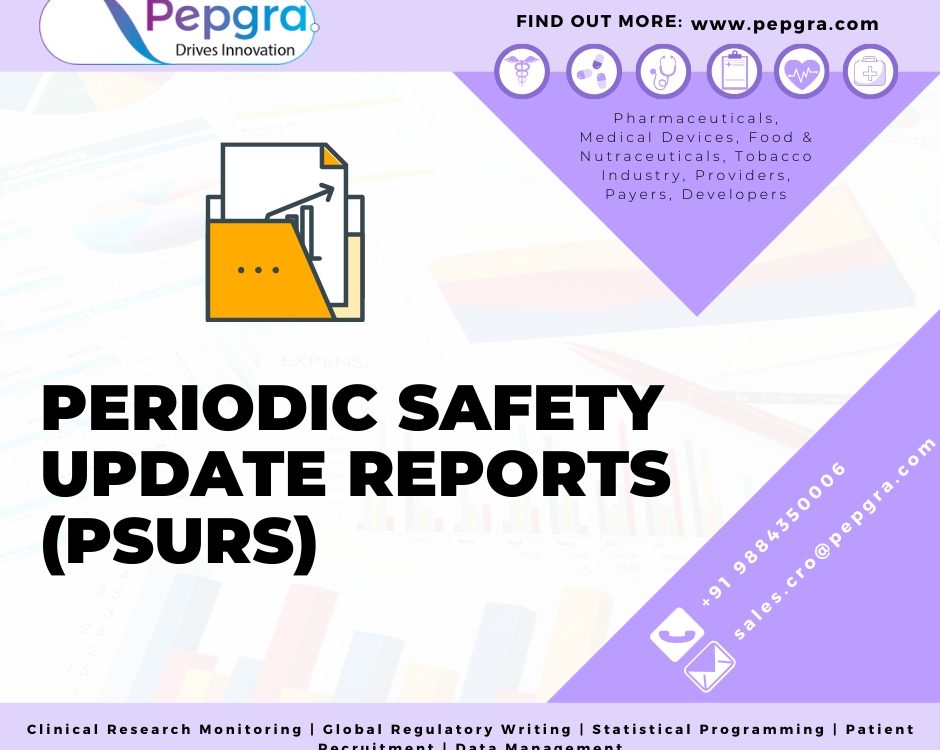In Brief
- The new European Union (EU) post-market surveillance (PMS) plan would act as a detailed tool for benefit-risk evaluation for medical devices.
- If the PMS is appropriately structured and executed, the EU-PMS plan would act as an intrinsic player in setting up a novel framework for proactive safety evaluation of medical drugs and devices.
The Need for PMS
Post Marketing Surveillance (PMS) can be defined as the process of identifying and gathering information pertaining to medications or medical devices after it has been approved by the concerned authorities such as the Food and Drug Administration (FDA) in the US. With regards to medications, a systematic PMS process commenced way back in the early 1970s and since then, there has been a substantial increase in PMS. Drug and medical device monitoring following the process of approval has become mandatory for several reasons (FDA, 2020).
Way back in the past during the 1950s and 60s, the number of drugs in the market were very scant compared to today which made monitoring a rather easy process. In the present day, drug manufacturing has assumed magnanimous proportions and is being consumed at a very high rate. Several other factors that warrant the need for PMS pertains to the modifications in the approval process of the FDA.
Though the process of approval has weathered harsh criticism, the FDA has countered the criticism by setting up opportunities and mediums for patients who are in need of critical drugs (Onakpoya et al., 2016). As an outcome, it might not be possible to identify the risks (during the premarketing stage) involved in using certain drugs.
Post market surveillance is executed by several different organization types, as well as agencies. These would comprise of universities, private organizations, pharmaceutical manufacturers and consumer advocacy groups. The objective of carrying out a PMS might vary from case-to-case and on the basis of the viewpoint of the personnel who would be responsible to execute the surveillance (Pane et al., 2019). Recent instances in terms of safety issues within public health that revolved around medical devices have also accorded much emphasis on the necessity to enhance the European Union medical device regulation (EU-MDR). This was particularly in response to the public health concern that arose in 2012 from hip implants.
Total metal-on-metal hip replacements were carried out effectively amongst several patients. However, abrasions from metal-on-metal led to leaching and erosion of metallic particles into soft tissue (FDA, 2013). Thus, the metallic debris resulted in weakened bone and tissue around the implant and eventually caused the implant to fail and necessitated the need for further surgeries. In the same year, another instance that led to a scandal pertained to the poly implant prothese (PIP) breast implants. Women in excess of 400,000 received these PIP breast implants which were manufactured using silicone gel of industrial grade. This industrial grade gel was prone to rupture and caused irritation and inflammation (New york daily News, 2012). This further advocated the need for PMS.
PMS: What it involves
Considering that the process of drug approval comprises of phase I, II and III trials, post marketing trials are often referred to as phase IV trials. PMS comprises of a systematic monitoring of drugs and medical devices as they are utilized in actual real-world scenarios. This is in contrast to controlled clinical settings during pre-marketing Clinical trials wherein the conditions of the study are strictly controlled (David & Kim, 2019). Though randomized clinical trials (RCTs) that have the propensity to lower variability are beneficial in evaluating the effectiveness of one drug or device as compared to the other, they seldom provide appropriate information on the effects of the drug or device following its release in the market for use by patients.
PMS: What it offers
PMS offers information which is highly valuable with regards to utilizing drugs within special population of patients. The information that is provided would not be easily accessible from pre-marketing studies. Studies that involve an RCT that have been executed prior to marketing comprise exclusively of subjects who match the preset exclusion and inclusion criterion, thereby creating a population that is largely homogenous (Suvarna, 2010). The population that makes up potential users following the drug or device being released in the market is very different from the population that has been evaluated during the phase of pre-marketing.
For instance, RCTs generally do not include women participants who are lactating or those who are pregnant. Therefore, PMS is only the medium of acquiring information on teratogenic and mutagenic impact of drugs amongst humans (Jain & Rahul Chauhan, 2019). Other populations who stand to gain from PMS would comprise of patients having multiple comorbidities and the elderly. Akin to pregnant and lactating women, extremely old patients are also not included during pre-marketing trials. A drug might affect different populations in a different manner. For example, a 30 year old healthy patient might show a different effect as compared to an 85 year old adult with multiple health issues.
PMS Plan Outputs
EU-MDR, there is a need to have a specific PMS plan for every product within an organization’s product portfolio. All medical devices of all classes are expected to have a PMS plan whose scope would vary as per the complexity of the product and the risks it brings. The outcome of the activities pertaining to PMS would make an impact on the process of PMS during the lifecycle management of the device. Certain information derived from the PMS plan would be utilized to update other documents pertaining to PMS. An approach which is modular in order to structure the PMS plan contents would be highly beneficial in providing consistent updates to other information related to PMS.
The outputs from the PMS plan would result or impact diverse post-market documents. For instance, following a review of national registries (an aspect of the Post Marketing Clinical Follow-up [PMCF] plan), it is possible that a manufacturer might recognize a new issue in terms of safety with the product which might impact diverse post market documents; update to clinical evaluation report (CER), development of corrective and preventive actions (CAPAs), new training for users or submitting field safety corrective action (FSCA) (Pane et al., 2019).
References
-
- David, S. & Kim, P.Y. (2019). Drug Trials. In: StatPearls [Internet]. [Online]. StatPearls Publishing. Available from: https://www.ncbi.nlm.nih.gov/books/NBK546595/.
-
- FDA (2013). Metal-on-Metal Hip Implants. [Online]. 2013. Available from: https://www.fda.gov/medical-devices/implants-and-prosthetics/metal-metal-hip-implants.
-
- FDA (2020). Postmarketing Surveillance Programs. [Online]. 2020. Available from: https://www.fda.gov/drugs/surveillance/postmarketing-surveillance-programs.
-
- Jain, P. & Rahul Chauhan (2019). India’s New Drugs and Clinical Trials Rules: An Industry Perspective. [Online]. Available from: https://www.raps.org/news-and-articles/news-articles/2019/7/indias-new-drugs-and-clinical-trials-rules-an-in.
-
- New york daily News (2012). EU to tighten medical controls after PIP breast implant scandal. [Online]. Available from: https://www.nydailynews.com/life-style/health/eu-tighten-medical-controls-pip-breast-implant-scandal-article-1.1169444.
-
- Onakpoya, I.J., Heneghan, C.J. & Aronson, J.K. (2016). Post-marketing withdrawal of 462 medicinal products because of adverse drug reactions: a systematic review of the world literature. BMC Medicine. [Online]. 14 (1). pp. 10. Available from: https://bmcmedicine.biomedcentral.com/articles/10.1186/s12916-016-0553-2.
-
- Pane, J., Francisca, R.D.C., Verhamme, K.M.C., Orozco, M., Viroux, H., Rebollo, I. & Sturkenboom, M.C.J.M. (2019). EU postmarket surveillance plans for medical devices. Pharmacoepidemiology and Drug Safety. [Online]. 28 (9). pp. 1155–1165. Available from: https://onlinelibrary.wiley.com/doi/abs/10.1002/pds.4859.
- Suvarna, V. (2010). Phase IV of Drug Development. Perspectives in clinical research. [Online]. 1 (2). pp. 57–60. Available from: http://www.ncbi.nlm.nih.gov/pubmed/21829783.





